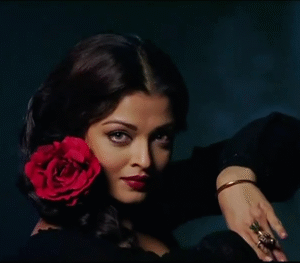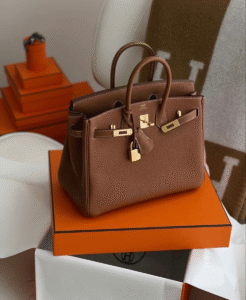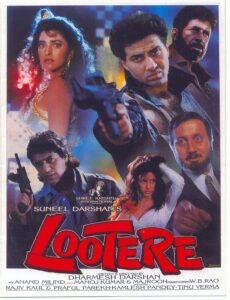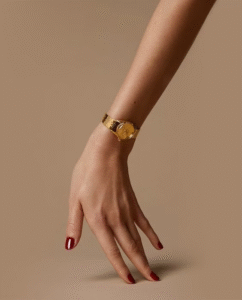
Remember when Cardi B, popular American rapper, monogrammed her very hair with the “LV” symbol? Yes, that happened. This is just one incident that is testament to the power, desirability and luxury quotient of just the “LV” symbol, keeping aside the other factors that contribute to a Louis Vuitton products’ quality and market position.
Right from being a regular sight with celebrities across the world in the form of bags and purses, to being represented through custom made, high fashion couture pieces that adorn the red carpet in events such as the Met gala– the house of Louis Vuittion does it all.
Even to the common layman, the “LV” symbol isn’t an unfamiliar sight for they’ve seen it atleast once in their life. It is not easily attainable and somehow, still so desirable.
So considering the sheer affluence, reach and impact that the brand holds and encapsulates, it’s hard to imagine a position where it loses a legal battle against a comparatively smaller-scale brand. But that is exactly what occurred in the case of Louis Vuitton Malletier vs ZV France (ZV standing for Zadig Voltaire).
Facts and facts !
The case began with Louis Vuittion serving a notice to Zadig Voltaire, accusing the latter of, in layman terms, riding on their long standing wave of success and painstakingly-built brand reputation.

Voltaire had begun to launch their products with a modified version of their previous logo. It was a monogram with the letters Z and V intertwined together. Louis Vuttion claimed that their logo was similar and was tending to be perceived by the public as one that corresponded to the iconic “LV” symbol, hence providing them an alleged, unfair advantage that they can misuse.
ZV’s modification of their logo was said to amount to trademark infringement “parasitism” and after their non compliance with the notice, it subsequently led to the filing of this suit and the commencement of proceedings in 2021.
Points of locking horns for the two brands
LV’s long standing reputation:
Vuitton points to the long history of the “LV” monogram’s popularity and success since the 19th century and then comes to discuss the latest style of the monogram called the ‘Twist’ which it claims is immensely well-known among it’s target consumer base and is what is in contention with the new ZV logo. Voltaire on the other hand highlights that the former party is only attempting to leverage the powerful reputation of the old monogram in the context of the new one, which in reality does not hold the same reputation as it’s predecessor.

Visually similar signs as a link:
LV’s argument rests on the following factors-one, both monograms consist of two capital letters, secondly, a common letter ‘V’
and thirdly being them having the same character size and overlapping nature. It asserts that there is a link created in the minds of the consumers between the LV trademark and the sign being disputed.
ZV counters this by saying that the monograms consist of different letters that are styled and presented in a distinctively different manner with different pronunciations even, hence establishing that each represent two different aesthetics and brand images.
Diluting the LV image:
LV pleads that Voltaire has the intention to make their newly launched sign as the main identifying factor for their brand to thereby misuse the former’s image and repute. It claims that it has painstakingly built a corporate luxury brand home to products that are synonymous to excellence and desirability, over a good period of time, and that this launch of the allegedly similar ZV sign would now dilute their image.
ZV in response contends that it has been rightfully using it’s brand name and logo since as early as 2005 and that it has no intention to gain unfair advantage of the plaintiff’s reputation.
Parasitic behavior:
LV contends that the new ZV sign’s placement was similar to that of the former’s, in the center of the bags, flaps and belt buckles; wit
h allegedly the same operational purpose. This, in Louis Vuitton’s opinion, does qualify as Parasitism.
The behind-the-scenes of the final judgment

The Court of Justice for European Communities, after interpreting the relevant Trademark directives and Articles has established that- “for to benefit from extended protection for dissimilar products or services, a registered mark must be known to a significant part of the public concerned by the products or services covered by it “
While the court did observe that both parties in dispute have strong reputations each with respect to their own logos and brand images, Louis Vuitton has failed to demonstrate and prove how their two marks in correspondence to the new LV monogram, which has been in use only for the past 8 years on a limited number of products, are well-known and has a reputation among the target audience.
The court again refers to a principle established by the ECJ saying that – “an infringement presupposes (without this being sufficient to characterize it) that, by reason of a certain degree of similarity between the signs, the public concerned makes a connection between them, that is to say that it establishes a link, even if it does not confuse them. The assessment of this link is based in particular on the degree of similarity between the signs, the degree of resemblance or dissimilarity between the goods or services, the public concerned, the intensity of the reputation, the degree of distinctive character of the mark”
In line with this, the court carefully examines the details of both the monograms and concludes that the perception these two signs is based on generic elements that are unlikely to confuse the public and the overlay feature of the letters. It holds that the marks are too dissimilar for the relevant portion of the public to see a link between the two signs.
In terms of the Article 1240 of the Civil Code which establishes what qualifies as Parasitism, the court holds that the company does not explain how the use of initials-based monograms on the bag center, belt buckle etc will confer an fruitful result and economic advantage, nor does the company prove how this idea solely belongs to them.
Hence the claims of Trademark infringement and Parasitism are dismissed.
The concluding decision–not so “L.V the Truth”?
The court rejected all requests and claims of Louis Vuitton and ordered the company to pay 30,000 euros to ZV France.
Zadig Voltaire indeed did not attempt to steal “the LV spotlight” today.
In the end, one can observe the recurring trend of the “big fish eats the small fish”, that is to say, the more renowned, larger-scale and reputed brand sues the smaller, more niche and yet established brand. The recent Nike-Bape lawsuit is an example for the same. The former claims that the latter has been infringing Nike’s trademark for years now, except that while it’s economic results weren’t as fruitful before, now the infringements are at an all time high while also contributing to Bape’s strong presence outside of the US, especially after its acquisition by a Hong Kong conglomerate.
And what is worth noting is the history that Nike has had with closing down other businesses through such lawsuits.

Are honest flattery and inspiration dangerous for comparatively smaller scale brands, when it interferes with the bigger fish’s feed? Is this trend indicative of the aggressive tactics adopted by such brands and companies?
These are often asked questions that plague the industry and have differing answers for. As for the current case, it appears that a minor and slight possibility of resemblance in the signs of LV and Voltaire was a good enough reason for Vuitton to make leeway for a full-fledged law suit.








